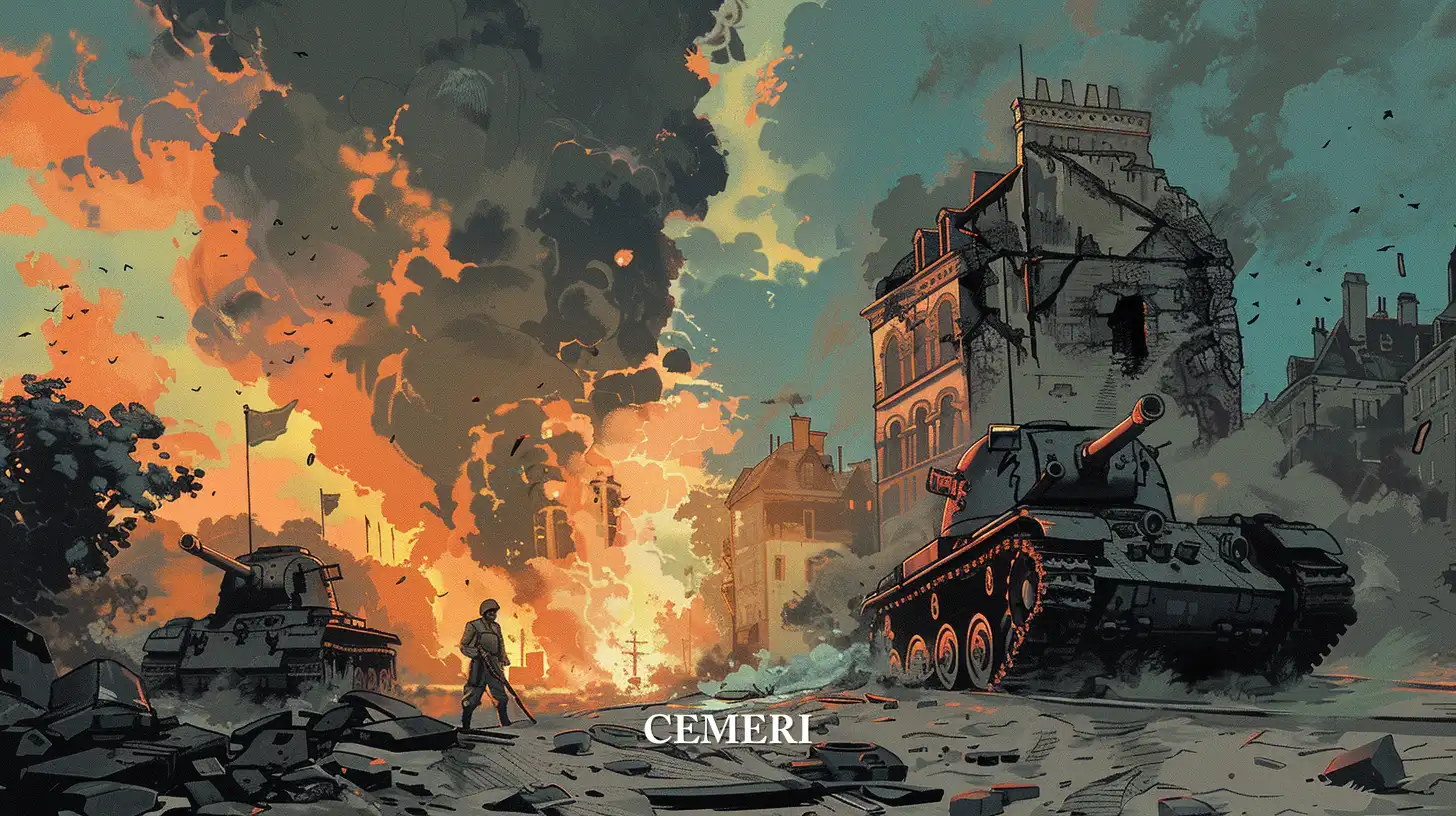Encyclopedia
Rebeca Romellon Barron
What is Blitzkrieg?
- The main objective of Blitzkrieg is a rapid and forceful attack, avoiding a large-scale war.

The blitzkrieg or Lightning War, is the name that describes a military tactic whose main objective is a rapid and forceful attack, avoiding a large-scale war with a high margin of loss of lives and resources. It consists of an initial attack strategy composed of an aerial bombardment and then, quickly and surprisingly, using mobile forces in order to avoid the enemy's response or its own defense. (National School College of Sciences and Humanities 2017)
Historical context of its successful emergence
Its beginnings date back to World War II in Europe, when Germany implemented the strategy of a series of short wars, through offensive weapons on a narrow front. In this way, it would achieve not only the opening of a gap by the enemy defenses, but also uncertainty and unprecedented alterations in the organization of the opposing troops; This triggered the surrender, as well as the invasion of much of the European continent. (United States Holocaust Memorial Museum n.d.)
The usefulness of this strategy led to its recurring use by Germany in subsequent combats. He completely successfully achieved Hitler's victory in the 1939 attacks on Poland, in 1940 he obtained the conquest of Denmark and Norway, due to the interest in iron and oil during the battle of Scandinavia; in the confrontation with the Netherlands, Luxembourg, as well as with France, where he surrounded and pursued the French and English troops to the Atlantic coast and concluded with an armistice that specified the division of French territory into two parts, one being occupied by the army German.
In addition, that same year there was one of the few battles lost before the total German defeat: the failed attempt to invade England, which was protected from the land attack by the English Channel and the British Royal Navy by the sea channel. This caused a change of objective for the Third Reich, which is why it opted, in 1941, for the occupation of Greece and Yugoslavia in support of Mussolini's infantry. In the course of that year the beginning of the end occurred. Initially, the blitzkrieg tactic was successful in the invasion process of the Soviet Union (USSR), as the German artillery managed to force the Soviet forces to retreat 600 miles, opening the way to Moscow.
However, the economic-military intervention of the United States (USA), in accordance with the alliance between the Soviet Union and Great Britain, added to the counteroffensive, in 1942, against the German soldiers in Stalingrad and the coasts of the Rio Volga, resulted in the impossible defeat of the German forces against the USSR (National School College of Sciences and Humanities 2017; United States Holocaust Memorial Museum n.d.). After that, Germany moved away from its objectives of carrying out a short-term war. The allies, mainly the Soviets, British and Americans, led to a long war that came to an end with the imminent defeat of the Third Reich in 1945.
Sources
Colás, X. *Vladimir Putin lanza una guerra relámpago en Ucrania.* El Mundo. 2022. https://www.elmundo.es/internacional/2022/02/24/6217dd6f21efa0101c8b45c4.html
Escuela Nacional Colegio de Ciencias y Humanidades. *Primera fase (1939-1941): la guerra europea.* Portal Académico CCH. 2017. https://e1.portalacademico.cch.unam.mx/alumno/historiauniversal2/unidad2/segundaGuerraMundial/primeraFase
Herrero, J. *Estas son las armas y vehículos utilizados en la guerra entre Rusia y Ucrania.* La Razón. 2022. https://www.larazon.es/internacional/20220303/dew7jruzt5hdhbh2iovcwdjg6u.html
Padinger, G. *¿Por qué Rusia atacó e invadió Ucrania? ¿Cuáles son los motivos y el origen del conflicto?* CNN Español. 2022. https://cnnespanol.cnn.com/2022/08/24/por-que-rusia-ucrania-guerra-invasion-motivos-orix/
Straschnoy, C. De la "guerra relámpago" en Ucrania a los 100 días de un conflicto sin un final a la vista. Télam Digital. 2022. https://www.telam.com.ar/notas/202206/594390-100-dias-guerra-ucrania.html#:~:text=De%20la%20%22guerra%20rel%C3%A1mpago%22%20en,un%20final%20a%20la%20vista&text=El%2024%20de%20febrero%20Vladimir,al%20pa%C3%ADs%20desde%20distintos%20frentes.&text=La%20destrucci%C3%B3n%20de%20Kiev%20tras%20los%20bombardeos.
Togores, L. *La guerra relámpago de ayer y hoy: el III Reich, los EE.UU. de Bush y la Rusia de Putin.* El Debate. 2022. https://www.eldebate.com/historia/20220330/guerra-relampago-ayer-hoy-iii-reich-ee-uu-bush-rusia-putin.html
Troianovski, A. Kramer, A. Erlanger, S. *La guerra de Rusia en Ucrania: 6 meses de transformaciones.* The New York Times. 2022. https://www.nytimes.com/es/2022/08/24/espanol/guerra-ucrania-rusia.html
United States Holocaust Memorial Museum. *BLITZKRIEG (GUERRA RELÁMPAGO).* Enciclopedia del Holocausto. Miércoles 24 de agosto de 2022. https://encyclopedia.ushmm.org/content/es/article/blitzkrieg-lightning-war

